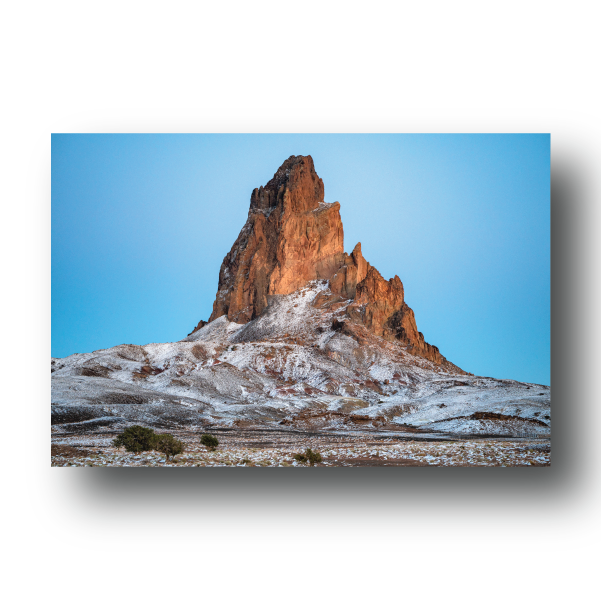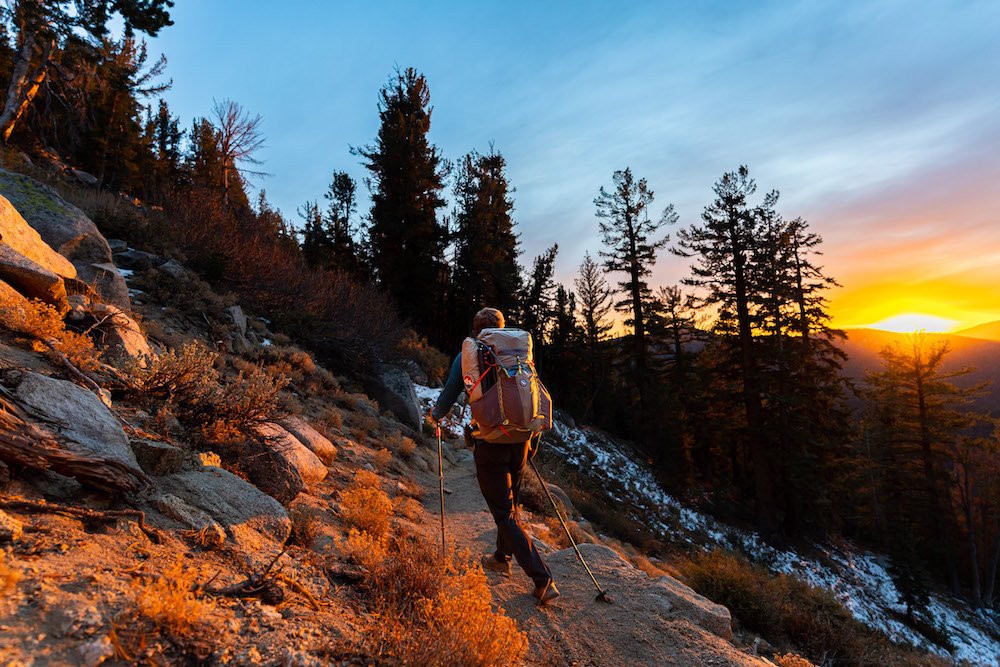Embarking on a bikepacking adventure is an invitation to embrace the thrill of exploration, the freedom of the open road, and the challenge of self-sufficiency. It's a journey that combines the raw power of pedaling with the simplicity of backpacking, creating an immersive outdoor experience like no other. As you set off on your two-wheeled expedition, the world unfolds before you, revealing breathtaking landscapes, hidden gems, and the wonders of nature.
Bikepacking is a new style of travel within adventure cycle-touring or expedition touring that involves exploring remote regions of the world on sturdy bicycles designed for the purpose. Off-road adventure cycling with lightweight gear, and often a rackless system, is now known as bikepacking. Bikepacking is not a new phenomenon though, as lightweight, soft-luggage touring has been in use for well over a century.
Whether you seek the rugged mountain trails, scenic coastal roads, or remote paths less traveled, this guide will introduce you to some of the best places for bikepacking, offering a tantalizing glimpse into the incredible destinations that await.
Soaking in the New Zealand views while bikepacking around the South Island of New Zealand. Photo by Dalton Johnson
Pros:
Adventure and Exploration: Bikepacking allows you to venture into remote and less-traveled areas, giving you a sense of exploration and adventure. You can discover hidden gems, beautiful landscapes, and experience nature in a unique way.
Physical Fitness: Bikepacking is an excellent form of exercise. It combines cycling, which provides cardiovascular benefits and works your leg muscles, with the physical demands of carrying gear and navigating different terrains. It can help improve your stamina, strength, and overall fitness level.
Cost-effective: Compared to other outdoor activities or forms of travel, bikepacking can be relatively cost-effective. Once you have your bike and necessary gear, the ongoing expenses can be minimal, primarily consisting of food, water, and occasional equipment maintenance.
Self-sufficiency and Freedom: Bikepacking allows you to be self-sufficient and independent. You have the freedom to choose your own route, set your own pace, and make decisions based on your preferences. It offers a sense of freedom and autonomy in exploring the outdoors.
Minimalist Lifestyle: Bikepacking encourages a minimalist approach. Since you have limited space on your bike, you need to carefully consider and pack only essential items. This can be a refreshing break from the materialistic world and teach you to appreciate simplicity.
Cons:
Physical Demands: Bikepacking can be physically demanding, especially if you're covering long distances or navigating challenging terrains. It requires a certain level of fitness and endurance. Steep climbs, rough trails, or adverse weather conditions can add to the physical challenges.
Gear Limitations: Due to the limited space on a bike, you have to prioritize your gear and carry only the essentials. This can be a disadvantage if you require specialized equipment or have specific comfort needs. Packing efficiently and making do with limited resources can be a learning curve.
Exposure to Elements: Unlike traditional backpacking, bikepacking exposes you more directly to the elements. You are constantly outside, which means you'll be exposed to weather changes, temperature fluctuations, rain, wind, or extreme conditions. Proper gear and preparation are crucial to handle such situations.
Safety Concerns: Bikepacking, particularly on remote routes, can pose safety concerns. You may encounter wildlife, encounter unpredictable road conditions, or face challenges in terms of navigation and communication. It's important to research and plan your routes carefully, consider safety precautions, and have contingency plans.
Limited Carrying Capacity: While the minimalist approach is an advantage, the limited carrying capacity of a bike can be a disadvantage if you need to carry bulky or heavy items. This may limit the duration of your trip or require additional logistical planning for resupplying food, water, or other essentials.
What is bikepacking
Bikepacking is a combination of cycling and backpacking, where individuals or groups travel long distances on bicycles while carrying all their necessary gear and supplies for self-supported outdoor adventures. It's a blend of the freedom and exploration offered by cycling with the simplicity and self-sufficiency of backpacking.
In bikepacking, riders use specialized lightweight bicycles and bags that are designed to carry gear efficiently. These bags are attached to various parts of the bicycle, such as the frame, handlebars, and seat post, to distribute the weight and maintain balance. The gear typically includes camping equipment, food, water, clothing, and any other essentials needed for the trip.
Bikepacking routes can vary widely, ranging from off-road trails and rugged mountainous terrain to paved roads and gravel paths. Riders often seek out scenic routes, remote areas, and nature trails to immerse themselves in the natural surroundings. The duration of a bikepacking trip can range from a single day to several weeks, depending on the distance covered and the goals of the rider.
Bikepacking offers a unique way to explore and experience the outdoors, allowing riders to cover longer distances compared to traditional backpacking. It provides a sense of adventure, independence, and the opportunity to connect with nature while traveling on two wheels.
BIKEPACKING VS CYCLE-TOURING
There are many definitions of what bikepacking is and what your bike set up should look like. Because of this, you will often find the water is muddied between cycle-touring and bikepacking, however there is an obvious difference; what is your bike capable of doing. If you can go off paved roads, maybe down single track, you have a bikepacking set up. If you are restricted to cycling on the road, you are cycle-touring.
Bikepacking and cycle touring are both forms of long-distance bicycle travel, but there are some key differences between the two:
Gear and Setup: Bikepacking typically involves using lightweight gear and specialized bags that attach directly to the bike frame, handlebars, and seat post. This setup allows for off-road riding and navigating rough terrain. In contrast, cycle touring often involves using panniers or racks that attach to the front and rear of the bicycle, allowing for more storage space and the ability to carry larger loads. Cycle touring setups are better suited for paved roads and smoother surfaces.
Terrain and Routes: Bikepacking is often associated with off-road and mixed-terrain routes. Bikepackers seek out trails, gravel roads, and more rugged environments, allowing them to explore remote areas and venture into nature. Cycle touring, on the other hand, tends to focus on paved roads and established cycling routes. Cycle tourists may prioritize scenic roadways, bike paths, or touring routes that pass through towns and cities.
Speed and Distance: Bikepacking tends to emphasize a faster pace and covering longer distances in a shorter period. It's not uncommon for bikepackers to cover 80-100 kilometers (50-62 miles) per day, or even more, depending on the terrain. Cycle touring, while still covering substantial distances, often places more emphasis on enjoying the journey and taking in the sights. Cyclists may travel at a more leisurely pace, stopping frequently to explore attractions or interact with local communities.
Self-sufficiency: Both bikepacking and cycle touring involve self-supported travel, but the degree of self-sufficiency can vary. Bikepacking typically requires a higher level of self-sufficiency, as the focus is on carrying minimal gear and supplies due to weight constraints. Bikepackers often rely on lightweight camping equipment and pack food and water for several days. Cycle touring allows for more storage capacity, enabling cyclists to carry more provisions or rely on services and amenities available along the route.
Experience and Objectives: Bikepacking often attracts riders seeking a more adventurous and rugged experience. It's popular among those who enjoy mountain biking, exploring remote trails, and immersing themselves in nature. Cycle touring, on the other hand, is often chosen by cyclists looking to cover long distances while enjoying the scenery, culture, and local experiences. It may involve staying in campgrounds, hostels, or even hotels along the way.
It's worth noting that the line between bikepacking and cycle touring can be blurry, and there can be overlap between the two. Some bicycle travelers may combine elements of both approaches depending on the terrain, their preferences, and the specific trip objectives. Ultimately, the choice between bikepacking and cycle touring depends on personal preferences, the desired experience, and the type of adventure one seeks on two wheels.
Best Places for Bikepacking:
Bikepacking offers an incredible opportunity to explore the world on two wheels, immersing yourself in nature, and experiencing unforgettable adventures. From rugged mountain trails to scenic coastal routes, there are countless destinations around the world that are perfect for bikepacking. Here is a list of some of the best places for bikepacking, each offering unique landscapes, cultural experiences, and thrilling cycling opportunities.
Great Divide Mountain Bike Route (United States) - This iconic 2,700-mile (4,345-kilometer) route follows the spine of the Rocky Mountains from Canada to Mexico, offering stunning landscapes and challenging terrain.
The Silk Road (Central Asia) - Follow in the footsteps of ancient traders on this epic bikepacking route that traverses through several countries including Kyrgyzstan, Tajikistan, and Uzbekistan, showcasing breathtaking mountain ranges and cultural wonders.
The North Coast 500 (Scotland) - This Scottish route takes you on a 500-mile (805-kilometer) loop around the northern Highlands, providing a mix of coastal views, rugged landscapes, and charming villages.
Annapurna Circuit (Nepal) - Explore the majestic Himalayas on this bikepacking route that circles the Annapurna mountain range, offering awe-inspiring scenery, diverse cultures, and challenging mountain passes.
Carretera Austral (Chile) - This famous road winds through Chilean Patagonia, showcasing pristine fjords, snow-capped peaks, and lush forests. The rugged terrain offers an unforgettable bikepacking adventure.
The Great Ocean Road (Australia) - Along the southern coast of Victoria, this scenic road offers stunning ocean views, beautiful beaches, and the chance to encounter unique wildlife while bikepacking.
The Pamir Highway (Tajikistan) - Known as one of the highest and most remote roads in the world, this bikepacking route offers unparalleled mountain vistas, challenging altitudes, and a glimpse into the local nomadic cultures.
Trans-Ecuador Mountain Bike Route (Ecuador) - Explore the diverse landscapes of Ecuador, from high-altitude volcanoes to lush rainforests, on this bikepacking route that spans the length of the country.
The West Coast of New Zealand's South Island (New Zealand) - Bikepack along the rugged West Coast, experiencing rainforests, glaciers, and dramatic coastal scenery, with the opportunity to explore remote wilderness areas.
The Trans-Pyrenees (France/Spain) - Cross the stunning Pyrenees mountain range, journeying from the Atlantic to the Mediterranean, and be rewarded with breathtaking views, charming villages, and a mix of challenging terrain.
These are just a few examples of the many incredible destinations for bikepacking around the world. If you are looking for more, check out this rad book, Bikepacking: Exploring the Roads Less Traveled, with several ideas Remember to research and plan your trip thoroughly, considering factors like weather, accessibility, and safety, to ensure an enjoyable and rewarding experience.
BIKE PACKING ESSENTIALS:
When you go Bikepacking the goal, at least for myself, is to bring as little as possible to rekindle the connection I have with mother nature, without sacrificing, too much, comfort. This balance between to much gear and not enough is a serious issue, but it shouldn’t be if you plan well. Why? Well, you never want your bike to be too heavy, but you also don’t want to freeze/go hungry, so do your research and find that middle ground. Here are some of the bikpacking essentials I suggest you always consider bringing with you:
Bicycle
Coffee (this stuff will get your heart PUMPING!)
Bikeshorts (very optional)
Enjoying the light bike while on a supported bikepacking trip from Lake Tahoe to Mount Whitney. Photo by Dalton Johnson
Bikepacking opens up a world of adventure, allowing you to embark on unforgettable journeys, explore remote landscapes, and immerse yourself in different cultures. From the rugged trails of the Great Divide Mountain Bike Route to the historical Silk Road and the breathtaking beauty of Iceland, there is a wide array of destinations that cater to the desires of bikepacking enthusiasts.
The best places for bikepacking offer a mix of challenging terrains, stunning scenery, and unique cultural experiences. Whether you seek the solitude of remote wilderness or the charm of vibrant towns along the way, each destination on our list provides an opportunity to create lasting memories and push your limits.
However, it's important to remember that bikepacking can be physically demanding and requires careful planning, preparation, and adherence to safety guidelines. Research your chosen destination, understand the terrain and weather conditions, and ensure you have the necessary equipment and skills to navigate the challenges you may encounter.
Bikepacking is more than just a means of transportation; it's a way to connect with nature, challenge yourself, and discover the beauty of our planet. So, saddle up, pack your gear, and embark on an adventure of a lifetime. The open road awaits, ready to take you on a journey that will leave you with stories to share and a deep appreciation for the world around you. Happy bikepacking!






